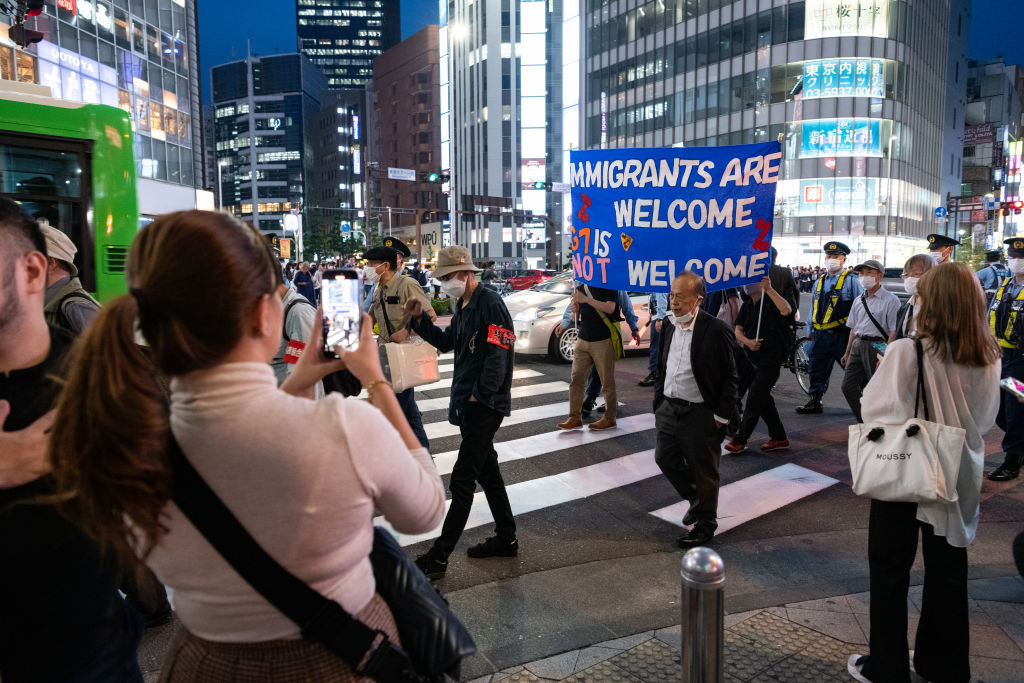Why some European and Asian countries actually need immigrants
At the start of 2023, China’s population fell for the first time in 60 years, with the national birth rate hitting a record low; and it is not the only country in this situation…
Many other countries, especially in Europe and Asia, will see their populations decline in the coming decades, if forecasts for 2100 published by the UN in 2020 prove to be true.
Eight countries with more than 10 million inhabitants have seen their populations decline over the past decade. Most are European.
Alongside Ukraine, whose population has plummeted due to the Russian invasion, the number of people in Italy, Portugal, Poland, Romania and Greece is decreasing.
There are many reasons behind the falls, some unique to each country, but they all share low fertility rates, meaning women are having fewer babies on average than before.
Fertility rates of between 1.2 to 1.6 children per woman are recorded in these southern and eastern European countries, according to the World Bank.
Photo: Tim Bish/Unsplash
A fertility rate of more than 2 is needed to keep a population stable. The replacement figure is 2.1 in developed countries and an even bigger number in countries with higher childhood mortality.
Photo: Charu Chaturvedi/Unsplash
The reason behind needing a higher fertility rate than 2.0 according to experts, is that even with the best healthcare, not all children survive to adulthood. Plus the fact that babies are slightly more likely to be male.
Photo: Garrett Jackson/Unsplash
The main reasons behind low fertility rates, research shows, are that there are more women in education and work, as well as greater access to contraception, leading to women choosing to have fewer children.
So in many ways, falling fertility rates are a success story of feminism. However, it’s still a problem for the world. Here’s why:
People think that having less kids is better for the planet because it means less carbon emissions. It would be true, but the real problem is the inverted age structure (more old people than young people).
In a massively aged world, who would pay taxes and healthcare for the elderly? Would people actually be able to retire?
Added to low fertility rates, is a huge migratory exodus in Poland, Romania and Greece, with more people leaving to go and live abroad than stay at home.
In Syria, the population has been devastated by more than a decade of grinding war, with millions of refugees fleeing to neighbouring countries and beyond.
Approximately 606,000 men, women and children have been killed in the fighting, estimates the Syrian Observatory for Human Rights (SOHR).
Russia, Germany, South Korea and Spain are all set to join this downward movement, with their populations beginning to decline by 2030.
But, while European, American and Asian populations will have declined by 2100, the number of people in Africa will continue to soar, according to UN projections.
Photo: Seth Doyle/Unsplash
The African continent will increase from 1.4 to 3.9 billion inhabitants by 2100. Some 38% of the world's population would then live in Africa, compared to around 18% today.
Photo: Hugo Ramos/Unsplash
Prof Ibrahim Abubakar, from University College London, told the BBC that if the predictions are “even half accurate, migration will become a necessity for all nations and not an option”.
According to the expert, a fundamental rethink of global politics is needed. "The distribution of working-age populations will be crucial to whether humanity prospers or withers," Abubakar sentenced.
While far-right anti-immigration politicians are gaining power in Europe, even some of them are admitting that the continent needs immigration for the economy to thrive.
One such example can be seen in Italy, whose population has shrunk over 1.5 million over the last decade, according to its government.
While their prime minister Georgia Meloni was one of the most strident voices on migration in the EU before coming into power, she completely changed her approach once she took office.
She has now introduced a legal migration decree that estimates Italy needs 833,000 new migrants over the next three years to fill in the gap in its labor force, according to Politico.
In Asian countries however, there is more resistance to the idea of large-scale immigration as a way to solve the country's population problem.
Photo: Jerry Wang/Unsplash
“There are many in Japan who are still not ready to accept foreigners. We need to discuss the sort of Japan that we want to live in for the future," Chisato Kitanaka, an associate professor of sociology at Hiroshima University told DW.
More for you
Top Stories








































